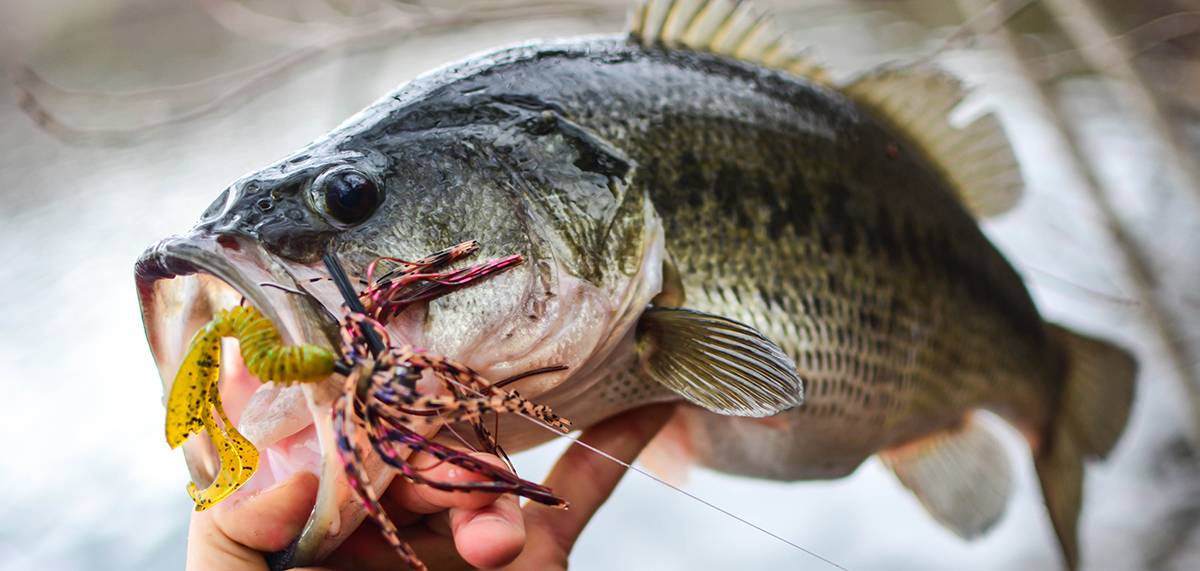Spring Bass Fishing in Iowa

Cold Water Bassin
By the time April rolls around many of us have been to several outdoor sports shows where pictures of open water trophies are being displayed and boats line halls, giving way to dreams of being out on the water. Bass anglers are itching to get out on the lake and set a hook in ole Mr. Bucket Mouth and reel one up to the boat.
Transition Time
April for many species of fish, is transition time. For most of Iowa average daytime temps will range from the upper 50’s to the mid 60’s. Snow is melting and the ice, if it’s not already completely gone, is giving way to open water. Can you still ice fish for bass in April? Past experience tells me that if there is any fishable ice left. The Northern reaches of our State and beyond will have the remainder. If you do venture out, regardless of the species you are targeting. Use extreme caution and always tell someone where you’re going and what time you plan on returning.
Water temps at this time of year will be, in a word, cold. But bass will begin to move shallow as the water begins to warm. Two reasons really, one is that is where the bait fish will also begin to stage as snow melts off and fresh water runs into the lake carrying tasty morsels that the smaller fish feed on. Secondly bass will begin their search for spawning areas. Although water temps still have a ways to go before the spawn occurs.
Generally when the water temps begins to climb above the 45 degree mark, bass will move from deep water wintering areas to between 2 and 12 feet of water. Weather patterns of extended sunny days with little wind will help warm the water quickly as well as a warm rain. Fish will become active and begin their spring feeding habits. Cold fronts however, will push these bass deep again and slow down the bite.
Look for shallow bays, especially those that have some transitional points along them. These could include a creek channel or some deeper water off the bay where bass can stage and move up to feed as water temps rise. Areas with logs, humps, rocks, and wood will provide bass with cover. As well as offering good ambush points for those unsuspecting bait fish that pass by.
Tactics and Tackle
As Iowa transitions from winter to spring, and water temps rise up to that magical 45 degree mark and continue to climb we have our best chance of boating some very nice bass. Historically pre-spawn, early spring time bass fishing produces the biggest fish. Why? Large female bass are feeding generously as they prepare for the spawn. These large fish will stage off spawning areas next to deeper water and will actively feed, especially during a warm stable weather pattern.
Look for shallow spawning areas next to deeper water. A creek channel that moves up into a shallow bay, or a point that comes out to deeper water with drop offs on either side are great areas to look for. As mentioned earlier, cover and areas where weed lines have started to develop are awesome spots to target. Begin by covering a lot of water. Throw crankbaits on the deeper break lines, 10-15 feet of water and lipless crankbaits for shallow break lines. These are your search tools. You can cover quite a bit of water looking for active fish. Once you’ve connected with a good fish, slow down and work the area thoroughly. There will be schools of larger fish staging off creek channels, from the mouth of the creek on up.
I never go out on the lake, whether it’s spring, summer or fall, without having a plastic worm tied to one of my rods. Another great cold water spring time bait is a jig and craw. Most of the waters that I fish I find that blue/black combinations’ work best. Though this really is somewhat of a personal preference, and usually in the 1/2 oz to 3/8 oz size. Another great color is pumpkin seed, green/brown combinations, anything really that will mimic some of the natural forage that bass encounter. I typically use medium to medium heavy rods for my worm and jig fishing. Heavy rods work great if you know you’re going to be fishing is some thick cover.
Reels tied with 15 – 20 pound fluorocarbon line work well. This line is tough and has less stretch than mono but more than braid. The feeling of the hit and setting the hook is greatly enhanced by these lines. Braided lines work great as well. These lines have virtually no stretch so when setting a hook. This means the rod doesn’t need to “load” the line to set the hook. Braided line is clearly visible to most fish especially in clear water. Tying a fluorocarbon leader will help in clear water situations. Just make sure you’ve created a strong braid to fluorocarbon knot that will withstand big hook sets. There are countless ways to tie these lines together. Make sure to research and practice these leader knots, don’t let that trophy get away because of a poor knot.
If you find bass have moved to shallower water rather than staging off in deeper areas, a great way to cover a lot of water in shallow conditions is using spinnerbaits. Chartreuse and white work very well, along with a single Colorado blade or dual willow leaf blades. The willow leaf blades, along with the skirt action, and a plastic jig or some trailer on the hook, will give the fish the illusion of a small group of bait fish. You can cover a lot of water with these baits. For slower presentations the Colorado bladed spinner bait is your best choice. If you feel the need for speed, throw that willow leaf out there and crank it in. Again, once you find active fish, slow down and fish the area methodically with slower baits.
Ice Fishing
As previously mentioned, ice fishing in late March and early April will be iffy at best for most of the State. However, there are some areas in Northern reaches of the state that still may have fishable ice. Much like early open water fishing in Central and Southern Iowa, late ice fishing can be some of the best of the season. Even though the lakes and ponds are covered with ice. Some Lakes will be melting causing an influx of fresh water in to area lakes and ponds. This turbidity will attract pan fish and smaller bait fish that are the prime forage for largemouth bass.
This is still transition time for bass, though lakes are covered by ice. They will instinctively begin to stage along creek channels along deeper wintering haunts and follow their forage in to shallower areas. A key factor at work in iced over lakes at this time of year is that shallow water is getting re-oxygenated.
Any ice angler can attest to the fact that he or she has hooked in to a bass while out ice fishing for crappie or bluegill. So it goes without saying that these same techniques and tactics can be used for late ice bass. You may have to punch a few holes to find those active fish, but don’t be afraid to move around a bit. If you can find a weed bed that hasn’t completely died off even better. These areas will harbor some of the smaller fish seeking shelter and safety from those hungry bass. Minnow imitation baits, like the Rapala Snap Rap ®, Jigging Shad Rap ®, and the Jigging Rap ® will work very well. Remember to match the lure to the bait that bass are targeting.
Small jigs tipped with plastic baits such as the Little Atom Nug ®, Custom Jigs & Spins baits such as the Shrimpo ® and Ratso ® tipped with wax worms or minnow heads will also give you an edge in cold water conditions. For bass upscale to a bit larger size that you would for bluegill or crappie. Although these smaller baits still catch big fish!
One last note on late ice, always remember that safety should always be your primary objective. Never fish alone and carry safety equipment with you at all times. CLAM has introduced a great safety product that every ice angler should have and that is the Emergency Throw Rope. It has a design to deploy quickly and easily should recovering a fishing partner be necessary. Carry your floating ice picks with you as well. Let someone know where you are going and how long you plan on being there. As the weather warms and lakes begin to shed their icy coats, thickness and stability will change.
Cold water bassin can be some of the most productive fishing of the year. Whether you’re chasing them through the ice or looking for staging bass in open water, spring bass fishing in Iowa can produce big results! Tight Lines…
By Ben Leal
May 14, 2025


